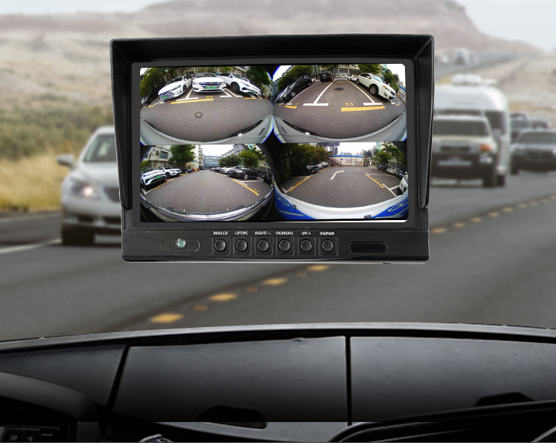360 Camera Kits for Fleets
Vision Safety Solutions for Vehicles and Fleets
Camera Systems for Fleets
Fleet Camera System Types
Dash cams: Installed on the dashboard, these record the road ahead or face inward to track how drivers behave.
Rear-view cameras are mounted at the rear of the car and are intended to avoid collisions when reversing traffic.
360-degree cameras: These systems integrate several camera feeds to remove blind spots and offer thorough coverage while providing an aerial perspective.

